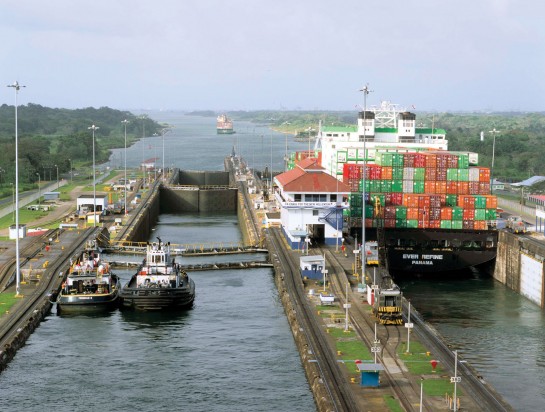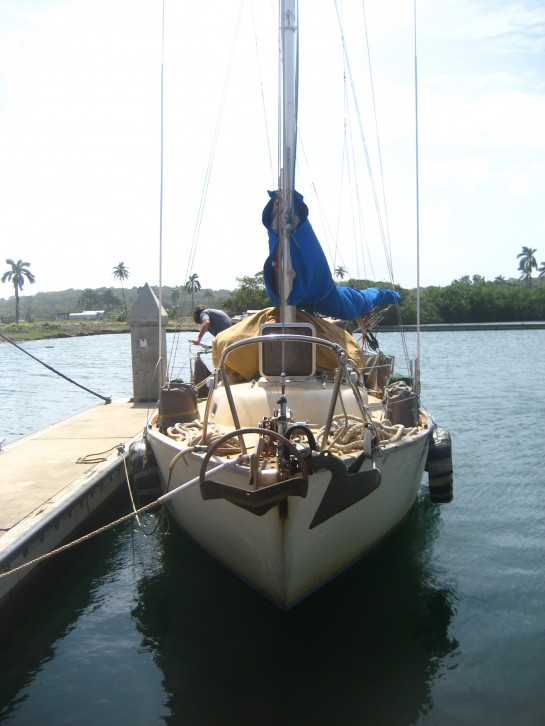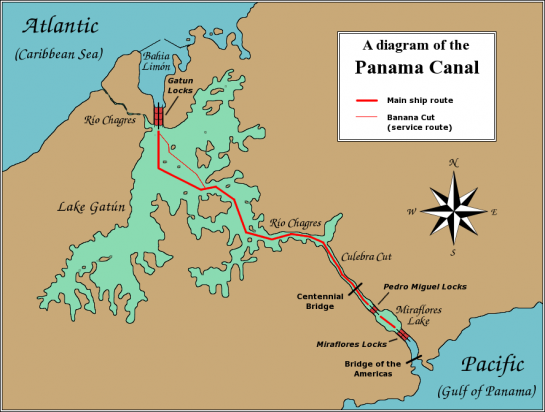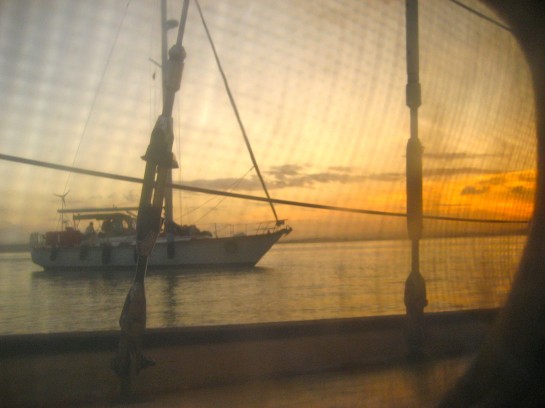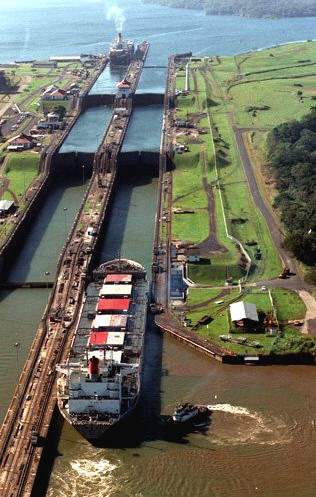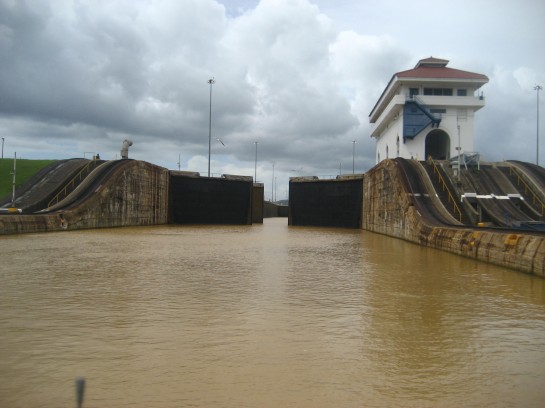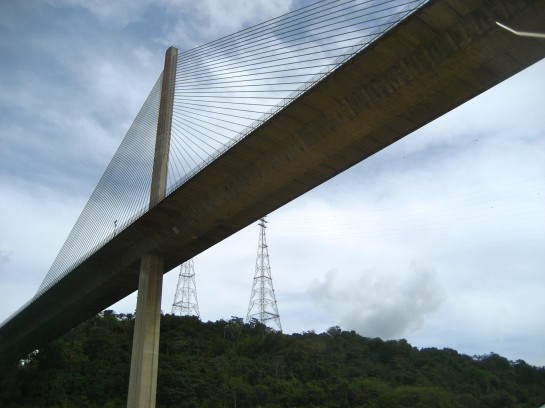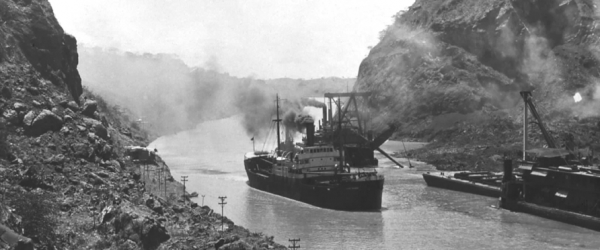
Sailing Through the Panama Canal
CultureMother Nature is often credited as being the most efficient and clever engineer of all time – and for the most part, this is true; however, a recent sailing adventure has left me in awe of the intellectual power behind the men who designed the Panama Canal.
I had the absolute pleasure of assisting Jonas in line handling his 1965 American-built sailboat, the Pelican, through the Panama Canal. Jonas is a passionate traveler who has been circumnavigating the world for the last five years, and the time finally came for him to pass through the Canal – boy, was I ever eager to volunteer when I found out he needed help! Jonas taught me many things about sailing, and because of him, I now fully understand exactly how the Panama Canal works…and yes, what “they” say is true: the incredible engineering behind this man-made canal is indeed mind-boggling.
The Panama Canal is a 77km long passageway for ships wishing to “shortcut” through the country of Panama in order to reach the Atlantic Ocean from the Pacific Ocean (or vice versa).
The Canal opened in August of 1915 and has provided transit to more than 950,000 vessels over the years through a series of three locks called Gatun (Atlantic side), Pedro Miguel and Miraflores (both Pacific side). Fortunately, I was able to experience the Gatun locks after sundown – seeing the large tankers and cargo ships pass through the twinkly, moon-lit locks in the distance was almost as exciting as being in the deep, dark lock chamber with a starry sky overhead. We moored in Gatun Lake for the night and slept on the Pelican (strict rules prohibit passersby from setting foot on land during the Canal-crossing process), then woke up at dawn to embark on the long voyage towards the last two locks on the Pacific side. The entire process took nearly 30 hours – I had no idea that crossing the Panama Canal was such a long process!
The Canal is built up higher than the oceans on either side (25.9m above sea level) because the oceans on either side of Panama have an eight-inch difference in sea level. This means that in order to cross from one side to the next, a ship must be elevated up to the maximum height of the canal on one side, and then lowered back down to sea level on the other side (brilliant!). And the real kicker is that the Canal itself consists of fresh water that is fed from Lake Gatun (which happens to be a giant man-made lake that supports the Canal), which is also situated in an area that receives massive amounts of rain. The rainwater helps maintain the lake’s freshwater levels, even though the Canal is flanked by salt water on either side (the Pacific and Atlantic Oceans). It was a surreal experience to watch the salt water and fresh water mix while we passed through the Gatun lock – the swooshing and swirling currents were reminiscent of trying to mix oil and water…although all we could really see where lots of bubbles.
The freshwater of the Canal is used in excessive volumes to elevate the ships that are going through the locks (thank goodness for the laws of buoyancy). Each lock consists of one to three chambers with large concrete doors that are 7 feet thick. Once the large double set of doors are closed, the chamber will fill up (or empty) in order to raise (or lower) vessels to the Canal level (or the Ocean level).
As you can imagine, turbulent water that is being pumped into an enclosed space that is housing a heavy ship can be a dangerous process. We were a little nervous when passing through the first of three locks – if a ship accidentally rammed the main gates of the chamber, mass flooding on the other side (accompanied by a vacuum effect within the chamber) could’ve lead to major trouble such as capsizing, rushing waters, damaged ship exteriors, injured passengers, drowning, lost cargo, etc.
Luckily, Canal officials insist that every single vessel passing through the Canal host a “Canal Advisor” – an individual who oversees the entire Canal passing (on the Captain’s boat) and ensures that the ship is sailing in the right direction.
The Advisor’s most important role is to supervise the process within the locks. He will make sure that each vessel is correctly secured along the Canal wall via ropes (it looks like the ship is tied to four leashes stabilizing it while in the chamber). Without these “leashes”, the ship is prone to movement while the water swells or empties beneath it…have you ever seen a toy boat in a bathtub? When you turn on the faucet and the turbulent waters start to slosh around in the tub, that boat is sure to swirl around and capsize even if it’s made of the most buoyant plastic in the world. The Canal Advisor’s job is to prevent this from happening to real life boats in the Canal chamber (talk about a lot of responsibility). In exchange for his expertise, most Captains and crews are eager to keep the Advisor happy as he passes on instructions – this means providing him with breakfast, lunch, snacks, water, juice and in our case, some chocolate cake for dessert!
Passing through the Panama Canal on a kind stranger’s sailboat will forever be a cherished memory. Seeing the famous Bridge of the Americas from the underside in the Panama Canal is an experience that very few can boast – and I consider myself very lucky to be among the smug who can.
I wish Jonas all the best in his continued adventure back to his home in California and thank him for choosing little ol’ me as a line handler (and also thank him for teaching me how to tie a proper sailor’s knot on the stern cleat).





